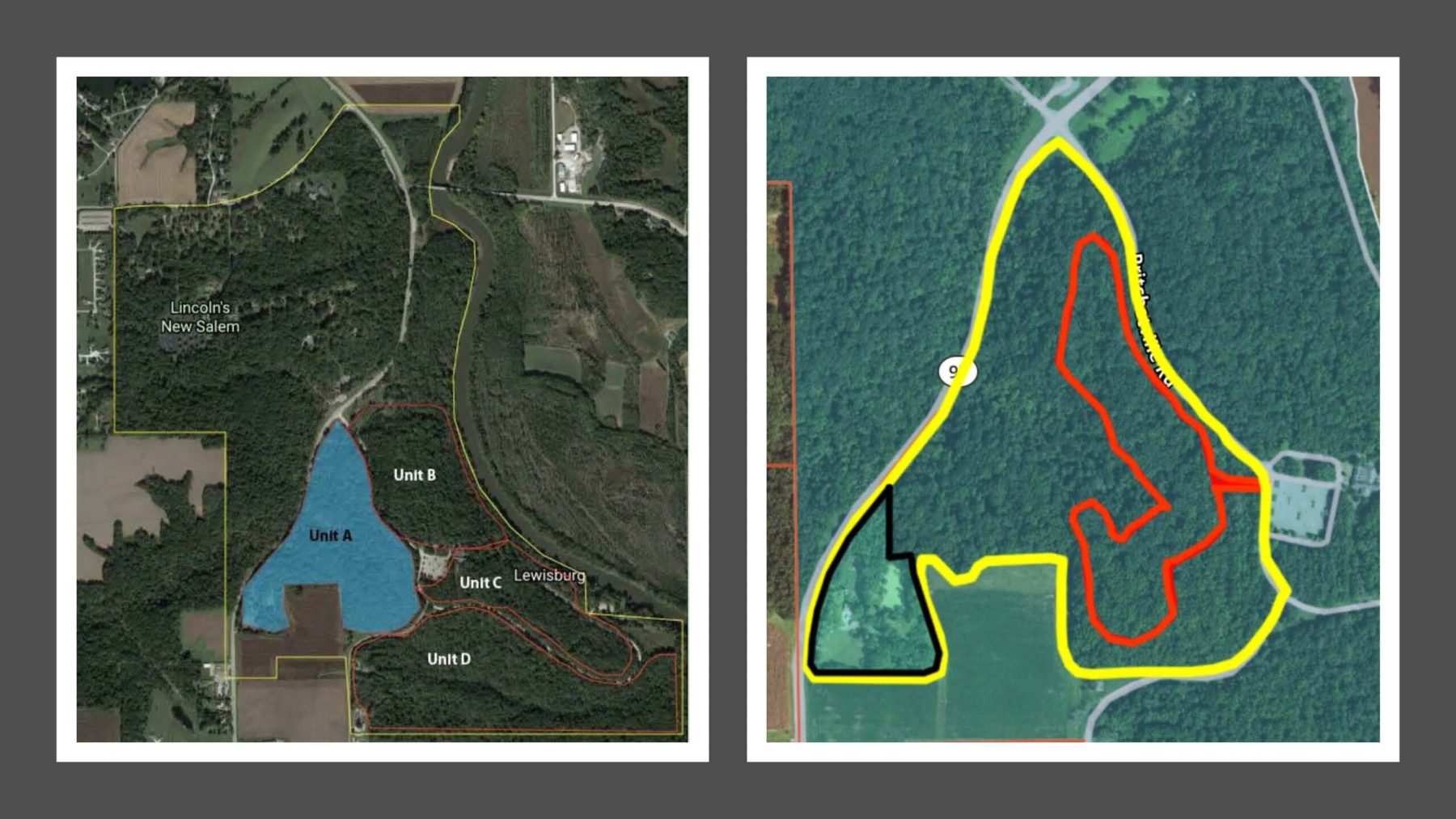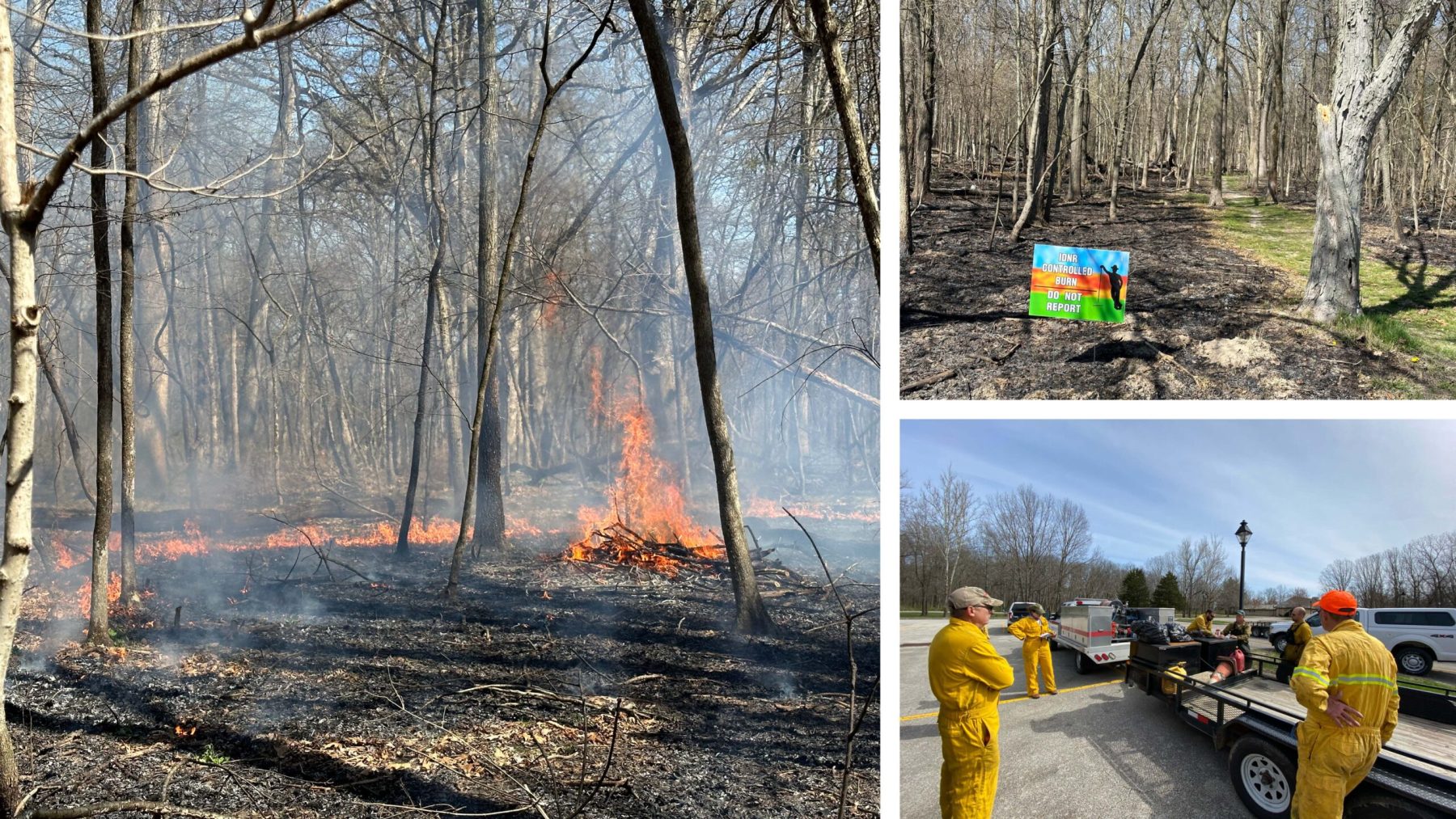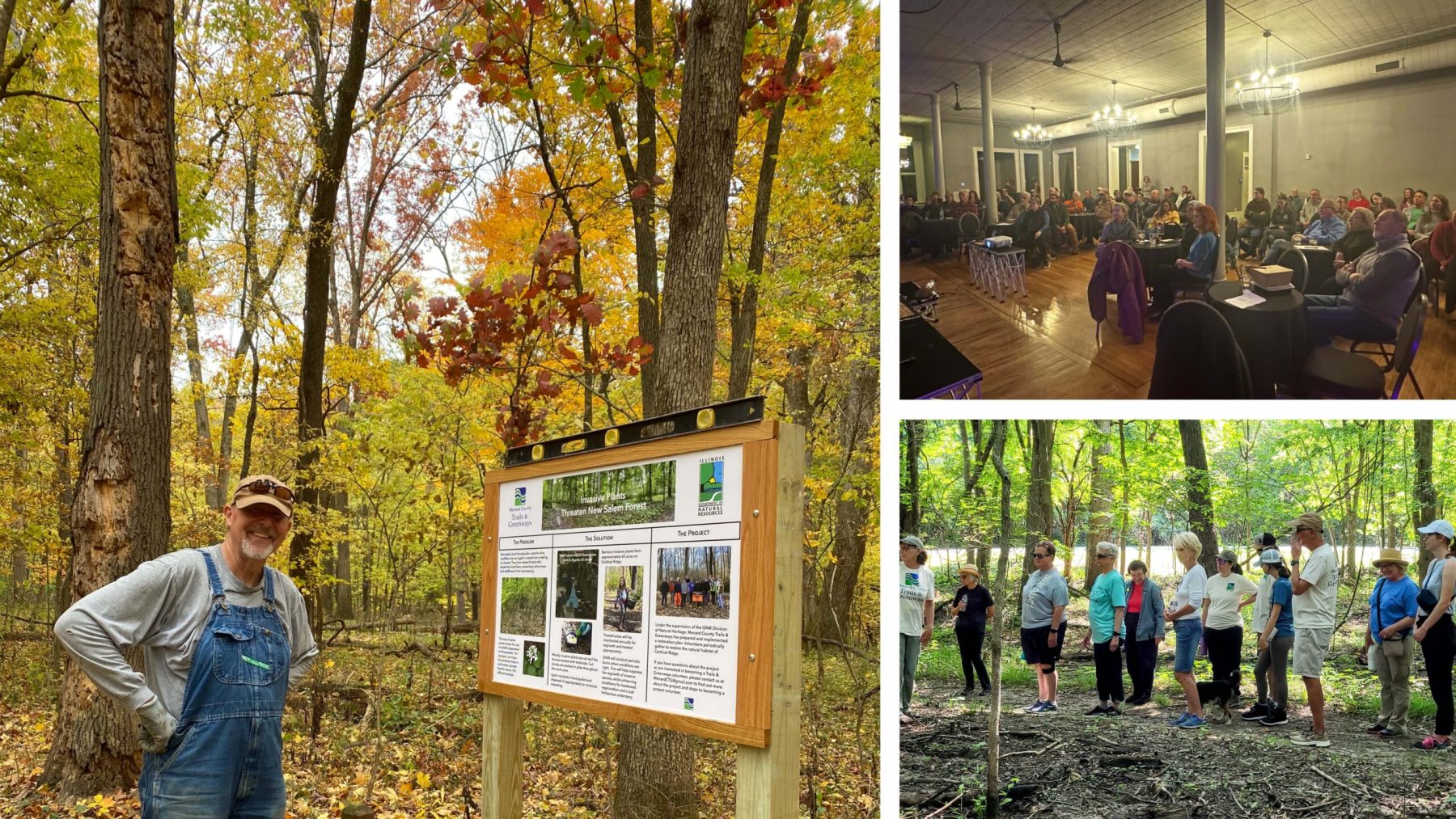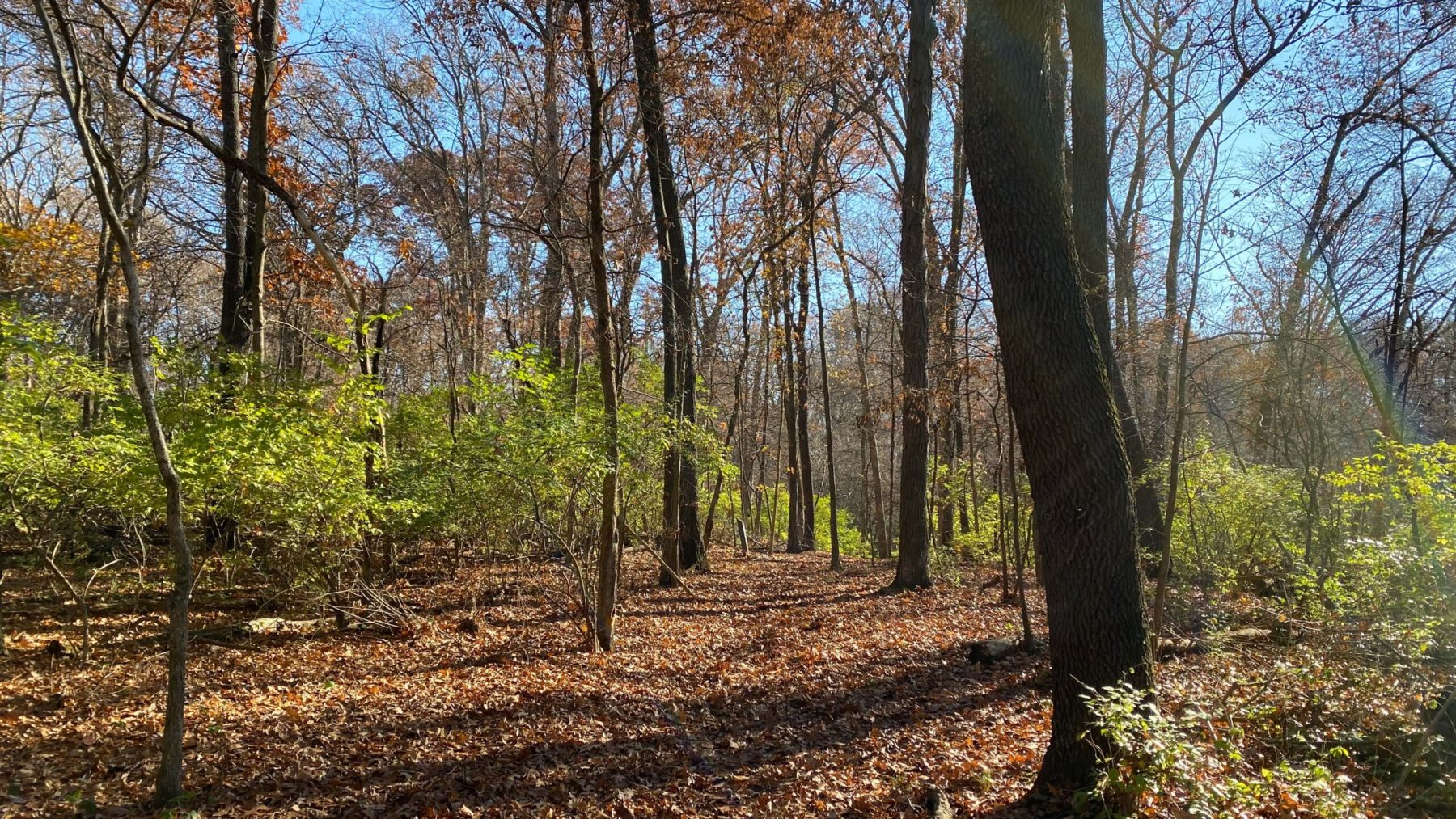Volunteer Habitat Restoration Project at Lincoln’s New Salem Historic Site
 We are fortunate to have Lincoln’s New Salem State Historic Site in our backyard, where its namesake lived and worked from 1831 to 1837. Several miles of trails wind throughout the nearly 700 acres of rolling hardwood forest above the Sangamon River, giving visitors a glimpse at what the landscape was like in Lincoln’s time. Or does it?
We are fortunate to have Lincoln’s New Salem State Historic Site in our backyard, where its namesake lived and worked from 1831 to 1837. Several miles of trails wind throughout the nearly 700 acres of rolling hardwood forest above the Sangamon River, giving visitors a glimpse at what the landscape was like in Lincoln’s time. Or does it?
The upland forest, which is what most of the 700 acres comprises, were dominated by oaks and hickories. The forest had an open nature due to somewhat regular fires that spread from adjacent prairies and savannas. The extra light created from the fires contributed to the establishment of a well developed understory of grasses and forbs.
 Unfortunately, a lot has changed on the landscape since Lincoln’s time. Most of our unmanaged forestland in Illinois, is now plagued with infestations of bush honeysuckle, autumn olive, buckthorn, multiflora rose, burning bush, stiltgrass, garlic mustard, and so much more. These invasive species restrict the ability of native plants to reproduce and thrive, which in turn threaten the mammal, bird and insect species that depend on the native forest plants for food and shelter.
Unfortunately, a lot has changed on the landscape since Lincoln’s time. Most of our unmanaged forestland in Illinois, is now plagued with infestations of bush honeysuckle, autumn olive, buckthorn, multiflora rose, burning bush, stiltgrass, garlic mustard, and so much more. These invasive species restrict the ability of native plants to reproduce and thrive, which in turn threaten the mammal, bird and insect species that depend on the native forest plants for food and shelter.
In other words, we’re at the brink of an ecological crisis—-the loss of an entire habitat. This loss, which is at our doorstep, threatens our quality of life by diminishing our ability to enjoy activities that native habitat provides, such as walking, hiking, botanizing, bird watching, mushroom collecting, etc
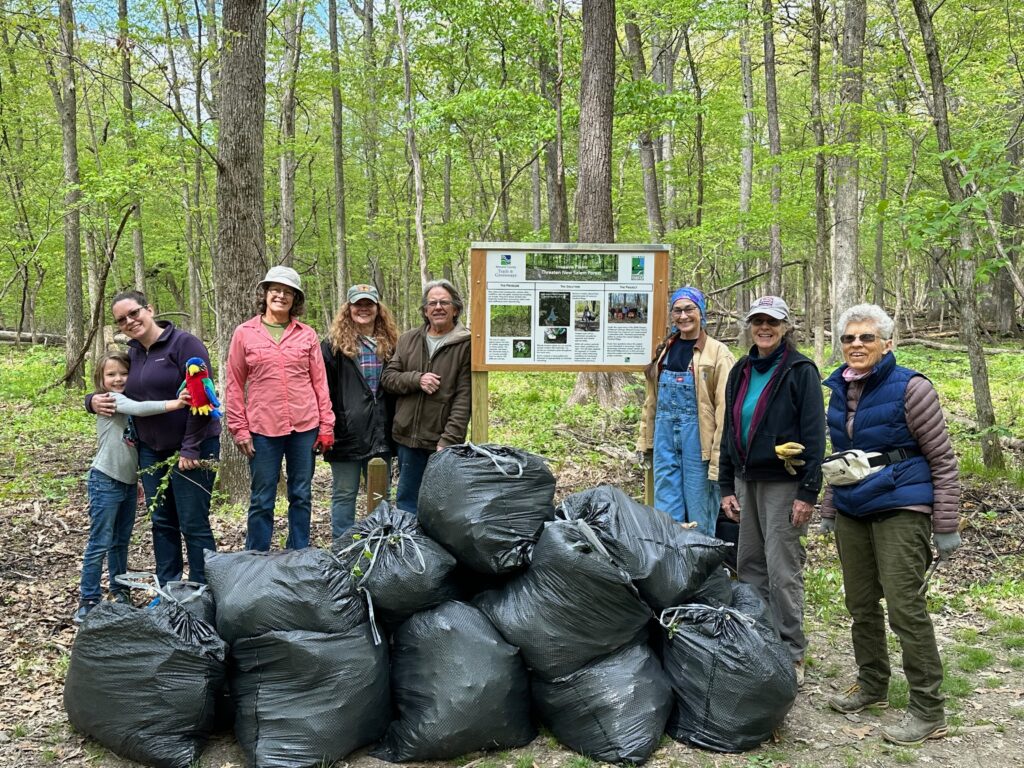 Removing invasive species at New Salem aligns perfectly with our vision to improve conservation, conservation education, and recreation in Menard County. Our project strives to:
Removing invasive species at New Salem aligns perfectly with our vision to improve conservation, conservation education, and recreation in Menard County. Our project strives to:
—Make a difference on the ground
—Engage members
—Educate the public
The short term project goal is to restore and maintain the historic character of the forest by removing the dominant invasive species. The long term goal is to perhaps one day have the site registered as an Illinois Land & Water Reserve.
 In the fall 2020 we started discussions with the District Biologist for the Division of Natural Heritage for Menard County about a project to restore the historic character of the roughly 60-acre area around the Cardinal Ridge Trail.
In the fall 2020 we started discussions with the District Biologist for the Division of Natural Heritage for Menard County about a project to restore the historic character of the roughly 60-acre area around the Cardinal Ridge Trail.
It was explained to us that we would be working under the District Biologist’s supervision as Volunteer Biologist Associates under the parameters of the Division of Natural Heritage Volunteer program. Each year we are required to submit a Plan of Work, provide proof of liability insurance, obtain signed waivers for every volunteer, and submit a year-end report including a roster of volunteers, hours worked, amount/type of chemicals used and project progress.
 The portion of the State Historic site on the east side of Rt. 97 was divided into four Units–Units A-D. We began work on Unit A, the 60-acre area around Cardinal Ridge Trail, April 2021 with a garlic mustard pull. The following November we began honeysuckle removal. By January 2, 2024 we had cleared all of the honeysuckle from Unit A that we could safely reach.
The portion of the State Historic site on the east side of Rt. 97 was divided into four Units–Units A-D. We began work on Unit A, the 60-acre area around Cardinal Ridge Trail, April 2021 with a garlic mustard pull. The following November we began honeysuckle removal. By January 2, 2024 we had cleared all of the honeysuckle from Unit A that we could safely reach.
 Between April 2021 and Jan 2, 2024, we tallied 973 volunteer hours over 128 days cutting & treating honeysuckle; and 195 hours pulling 196 garbage bags of garlic mustard.
Between April 2021 and Jan 2, 2024, we tallied 973 volunteer hours over 128 days cutting & treating honeysuckle; and 195 hours pulling 196 garbage bags of garlic mustard.
 Honeysuckle removal is done primarily using battery-operated chainsaws and loppers. We employ the cut-stump method – cutting the bushes a few inches above the ground surface and immediately spray each stump with glyphosate. Those people that are not operating chainsaws drag and stack tops. Garlic mustard is pulled each spring and placed into large garbage bags for proper disposal.
Honeysuckle removal is done primarily using battery-operated chainsaws and loppers. We employ the cut-stump method – cutting the bushes a few inches above the ground surface and immediately spray each stump with glyphosate. Those people that are not operating chainsaws drag and stack tops. Garlic mustard is pulled each spring and placed into large garbage bags for proper disposal.
 Volunteers assisted with 2 prescribed fires, in 2022 and 2023. IDNR lays out the burn unit and we help prep the burn lines. During the burn we stand by with flappers, rakes, water backpacks, etc. and watch for possible fires that might have jumped the line.
Volunteers assisted with 2 prescribed fires, in 2022 and 2023. IDNR lays out the burn unit and we help prep the burn lines. During the burn we stand by with flappers, rakes, water backpacks, etc. and watch for possible fires that might have jumped the line.
The purpose of the burns is to control:
Undesirable Woody Growth
—Oaks/Hickories are fire tolerant, so they withstand the fire
Nutrient Cycling
Garlic Mustard/Honeysuckle Control
Reduce Mesophication–dry things out, less hospitable to shade loving species that prevent oak/hickory regeneration.
Moving Forward: As long as there are invasives to tackle and we have willing volunteers we’ll continue with the project.
Unit A:
—Monitor for emerging seedlings and regrowth and treat accordingly.
—Continue burns when possible.
—Continue to pull garlic mustard.
Unit B: In mid-October 2024, honeysuckle removal began in Unit B–the area around ShickShack Trail. Volunteers will work through the winter as weather permits, and pull garlic mustard in the spring.
 It’s our hope that this project inspires others–volunteers, property owners, conservation organizations, public land managers–to know that if one small not-profit organization can accomplish what we’ve done on an all volunteer basis, anyone or any entity can do their part. Together we can make a difference.
It’s our hope that this project inspires others–volunteers, property owners, conservation organizations, public land managers–to know that if one small not-profit organization can accomplish what we’ve done on an all volunteer basis, anyone or any entity can do their part. Together we can make a difference.
Volunteers needed for the following jobs. Contact us by email.
-
- Operate chain saws (battery operated preferred–quieter and cleaner) (volunteers must be experienced and provide their own equipment, including PPE),
- Use hand loppers and saws,
- Spray cut stumps with herbicide (must take a training provided by MCTG licensed applicators),
- Haul and stack brush.
Check out our article in May 2023 issue of Outdoor Illinois Journal, Invasive Plant Species: they have to go!
Follow us on Facebook to hear about project workday opportunities.
Project Slide Show








